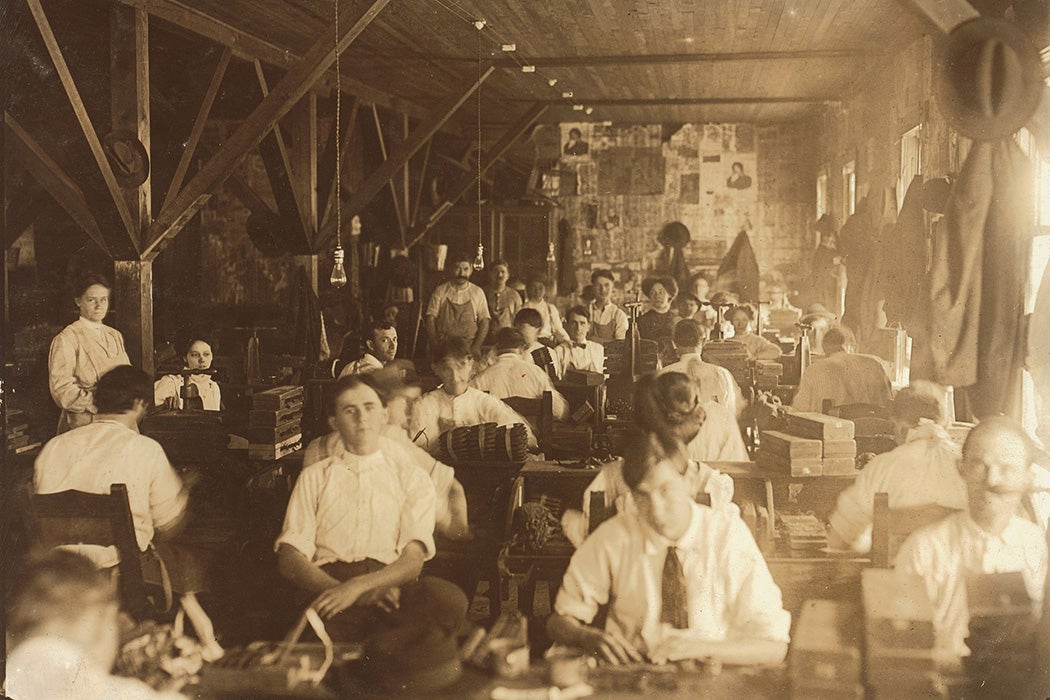In the late nineteenth century, a small part of coastal Florida had its own unique culture, created by Cuban immigrants. And then, as historian Andrew Gomez explains, Jim Crow segregation changed everything.
Gomez writes that the start of Cuba’s Ten Years’ War in 1868 sent Cuban cigar-makers and their employees fleeing to Florida—specifically to Ybor City (now part of Tampa) and Key West. The workers in this multi-million-dollar industry had various mixes of African, European, and Indigenous ancestry. And, despite Cuba’s own historical racial hierarchy, they brought with them the ethos of the nation’s independence movement, which was becoming increasingly committed to racial equality.
“In Florida, Cubans of color organized revolutionary committees, worked in concert with military leaders, and held deep ties to the regional press,” Gomez writes.
Key West’s Instituto San Carlos, founded in 1871 by Florida Cubans, housed one of the first racially integrated schools in the US and hosted overflowing lectures about the importance of Black Cubans for the future of that country. The institute was among the most prominent of the area’s many mutual aid societies, which offered health insurance, help with burials, entertainment, and other services. Meanwhile, at the cigar factories, labor organizations built by anarchists and socialists, such as Ybor City’s La Resistencia, recruited workers from all job positions across lines of race and gender.
To the larger US culture of the time, Cubans occupied a racial status somewhere between Black and white, much like Eastern and Southern European immigrants, Mexicans, and Creoles. But, Gomez writes, that began to change as Jim Crow laws and white supremacist terrorism grew in intensity.
Under Governor Edward Aynesworth Perry, elected in 1885, Florida’s government reversed Reconstruction-era changes, removing Black officials from office and enshrining racial segregation in the state constitution. By the late 1880s, some of the many marriages between Cubans of different skin tones were being challenged as miscegenation.
Around the turn of the twentieth century, mutual aid societies including the Instituto San Carlos adopted rules excluding Black Cubans. And Cuban schools, many of which had initially defied Florida’s 1880s-era segregation requirements, gradually became white-only institutions. Some darker-skinned Cubans found themselves banned from the movie theaters and pools their cousins enjoyed.
Meanwhile, Gomez writes, vigilante committees broke up the radical labor organizations. In their place, the Cigar Makers International, an affiliate of the American Federation of Labor, began organizing the cigar factories—but just the white workers.
Weekly Newsletter
The 1920s brought the second wave of the Ku Klux Klan to communities across the country. In South Florida, the KKK targeted members of the Cuban community, particularly those who dated across the increasingly solid Black-white line.
Legal segregation and vigilante terrorism pushed Black Cubans into African American schools and institutions, which became increasingly multicultural. Despite language, cultural, and religious barriers, many people from these communities formed friendships and marriages.
White Cubans, meanwhile, followed the same trajectory as the region’s Spanish and Italian communities, becoming increasingly integrated into white Anglo society.
Support JSTOR Daily! Join our membership program on Patreon today.







